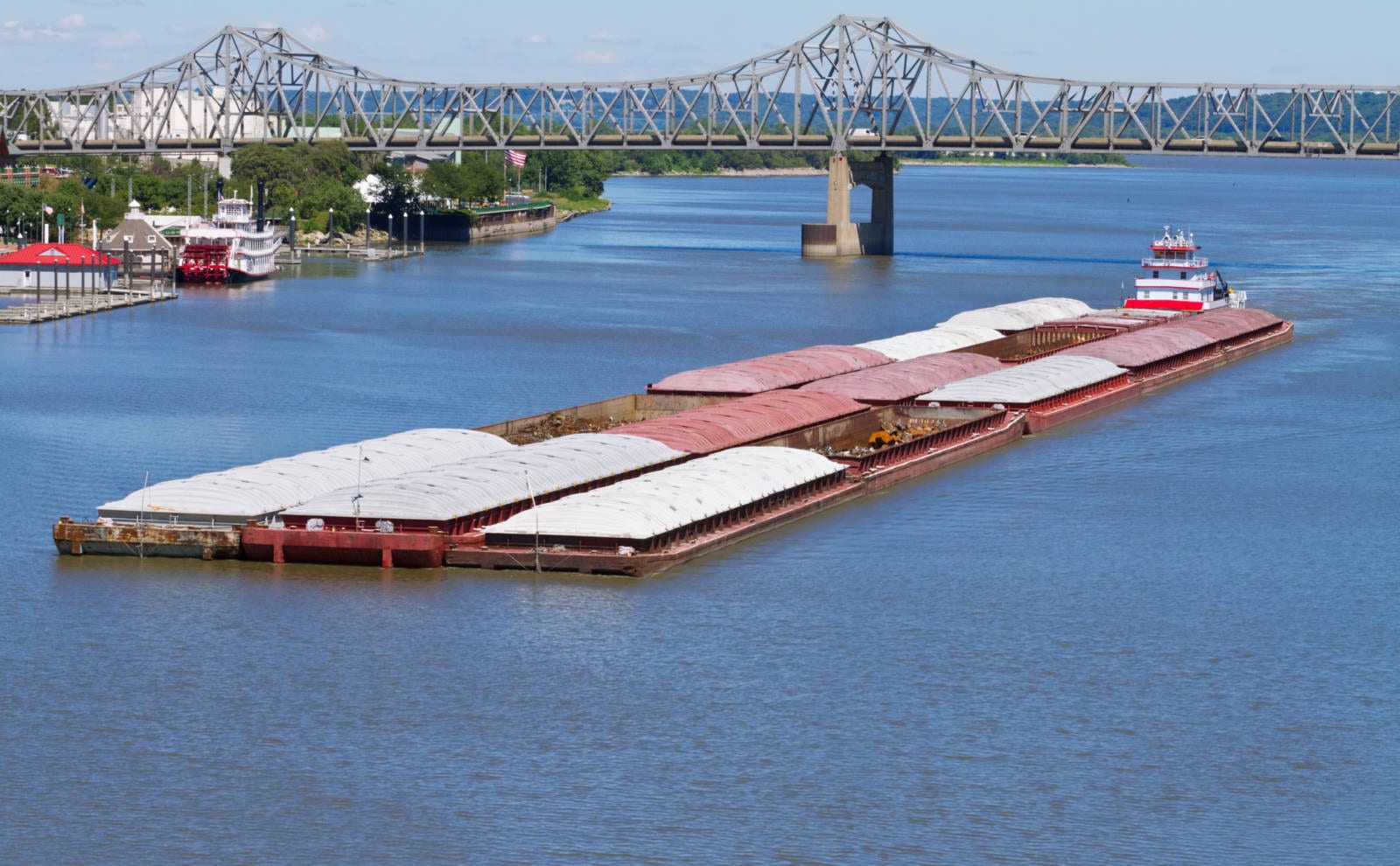The U.S. Grains Council (USGC) is exploring modes of transportation in the U.S. supply chain that provide a reliable supply of agricultural commodities. Waterways throughout the U.S., especially in U.S. Midwest, continue to deliver soybeans, corn and other products to ports for efficient export to customers around the world.
The same farmers growing corn highlighted in this article also produce soybeans and soy products. All these commodities rely on the same river terminal and barge system to efficiently transport them for export. According to the Soy Transportation Coalition, 89% of the soybeans exported from the Mississippi Gulf region arrive to those ports via barge.[1] And barge transportation is the most fuel-efficient option to move soybeans to ports.
Flowing from farms in the Corn Belt down to the Mississippi River and into ports on the Gulf of Mexico, more than 12,000 miles of marine highways are a crucial part of the U.S. grain supply chain – one that has continued to operate in spite of the COVID-19 pandemic.
“U.S. geography happens to be extremely suitable for the ag trade and ag export business,” said Thomas Russell, president of The Russell Marine Group, who has compiled a monthly river condition report for the last 10 years. “The network of inland waterways and natural ports throughout coastal locations make water transport the most economical way to move large amounts of bulk grain.”
[1] https://www.soytransportation.org/Stats/Ports_ExportsByPortRegion.pdf
